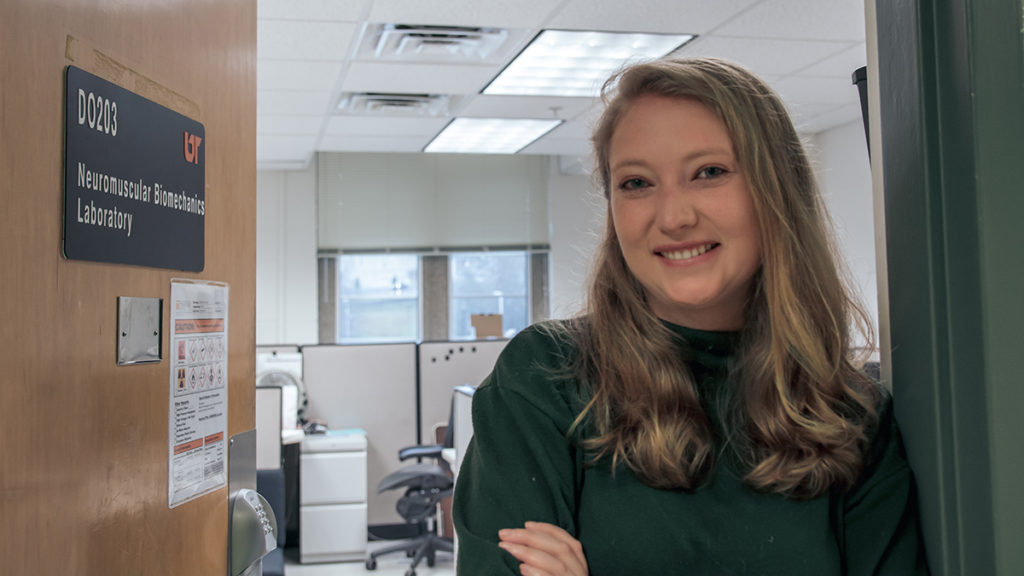
By Randall Brown
Ashley Rice traded coastal sights for mountain life and physics for mechanical engineering when she chose her graduate-study path. A native of Aiken, South Carolina, she finished her undergraduate degree at the College of Charleston and arrived at Rocky Top to work toward her PhD with Associate Professor Jeff Reinbolt’s research group.
The pace of life has stepped up along with the experiences of new territory.
“There’s a lot more to do in Knoxville compared to Aiken, and the urban wilderness we have here is unbeatable,” said Rice, who enjoys hiking and just getting outside whenever possible.
She admits missing having beaches nearby—and Charleston’s famous cuisine.
“The food in Charleston is fantastic,” said Rice. “But there’s nothing quite like the mountains we have here, so it’s a nice trade. I also like going to a large SEC institution where school pride and sports are so closely intertwined.”
Another trade she appreciates is finding concrete ways to apply her background in more conceptual data.
“My favorite course in undergraduate physics was classical mechanics,” said Rice. “I really enjoyed learning how equations—just a bunch of letters and numbers—can model real-world motion and systems.”
Her fascination helps her wield the data to make a healing impact for people undergoing physical rehabilitation after a stroke.
“The opportunity to apply this to data collected from real people, while at the same time being able to contribute to improving rehabilitation efforts and treatment design, was something I was really excited about,” she said.
Rice and team look to develop and customize predictive models to answer the question of how well a prescribed treatment will contribute to improving an individual stroke victim’s motor-control capacity.
“Currently, we’re working on musculoskeletal modeling of post-stroke gait,” she said. “We want to know how to optimize a treatment so that participants maximally benefit and regain as much motor function as possible.”
Metrics to judge post-stroke motor control vary person-to-person: Some people improve and some don’t. The team uses multiple machine learning algorithms to match the metric with the person, based on pre-therapy baseline measurements of their walking ability.
“We can likely have a good model in place to figure out if this treatment will be suitable for this individual,” said Rice.
Rice and colleagues performed hundreds of simulations and grouped results based on levels of motor-control capability.
“We’re using a special statistical method to capture the time-dependent differences between each group,” she said. “This information will tell us what aspects to target during rehabilitation, depending on which group the person falls in.”
Rice’s work with the Reinbolt group has given her valuable, and enjoyable, experience in the field.
“It’s allowed me to dabble in a lot of areas, from biomechanics to modeling to statistics and beyond, so it’s opened a lot of doors,” she said. She has become particularly interested in statistics and machine learning, and how these help to extract information and draw conclusions from data. “I’m considering careers then in data science, where these techniques can be applied broadly to all sorts of data.”
Rice’s research contributions show off the Volunteer Spirit in one of the truest ways possible: applying science directly towards improving the human condition.